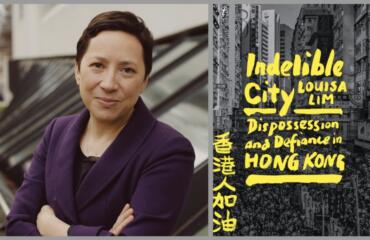TRANSCRIPT:
Dilpreet Kaur: #foodporn, #fitspo, #blessed, #wanderlust, #internationalwomensday, #timesup, #MeToo.
Silvi Vann-Wall: When the Harvey Weinstein scandal broke, the New York Times newsroom was not expecting the focus of the new gender initiative to be sexual harassment cases.
DK: They certainly did not expect it to inspire a hashtag, which in turn inspired a whole movement of women standing up to their abusers everywhere.
SVW: As stories of sexual misconduct continue to flood front pages, the director of the gender initiative Francesca Donner spoke to Gael Jennings at the University of Melbourne, and gave us an inside look at the journalism behind the #MeToo movement.
DK: When asked why the New York Times was focusing on ‘gender’, Francesca said:
Francesca Donner: Gender, kind of grows up as a topic that seemed to sort of transcend countries, in a way. It seemed to be a topic of, more or less, universal interest.
SWV: Francesca said the gender initiative was launched just as they were breaking the Harvey Weinstein story:
FD: We weren’t hi-jacked by sexual harassment. It was the conversation that people needed to have and we just went all out on #MeToo and we launched a newsletter called the #MeToo Moment and one of the goals of that newsletter was really looking at ourselves and saying, “Oh my God, we can barely keep up…we are in a newsroom…we can barely keep up with all the news that is breaking.” The words that kept coming out of our mouths were like, “It’s a tsunami of stuff” … “the dominoes keep falling”… “It’s an avalanche”… and it really felt like that …I felt like in the US you could hardly take a breath before you were like “Oh my God! Who is it today?”
DK: When asked why celebrities were the focus of #MeToo…
FD: Celebrities are part of the story because it was a Harvey story, but celebrities were actually a pretty good doorway in for people because what’s weird about celebrities is that they’re familiar. I think that we’ve seen sexual harassment stories come out before where the hook didn’t quite get in there because it was, “Yeah, I feel sorry for this person, but whatever. I read this piece and I’m sort of moving on…”
SVW: Francesca highlighted the importance of diversity inside and outside the newsroom when reporting these kinds of stories:
FD: How else can we possibly reflect the world properly if we only have one point of view? Actually you made me think about something else, which is really essential and part of it is this education of the newsroom, right? Thinking very, very critically about the stories that we produce, the stories that we choose to do, and representations of gender and diversity and race, by the way, in those stories, and really being quite critical about things like, “Who’s being represented in the photo? Have we got more white males in this photo? Can we put a woman in this photo?”
We could criticize ourselves and say, “We told the story from a white, privileged woman’s perspective,” but that was also part of the story. It’s not the whole story, but now we have to make sure that we keep covering this issue in other ways.
DK: Francesca emphasised why she feels it’s necessary to have these conversations:
FD: I got The Monthly and the lead story in The Monthly is the very first thing that if you open the thing after this table of contents, there’s a whole thing on taking stock of #MeToo. I got the Australian Spectator. Huge cover on #MeToo, #MeToo.
But The Age, I couldn’t believe … Well, they had Barnaby on the front page, that’s fine, but they had a sexual harassment survey, they had another thing about firemen and sexual harassment in that industry. All of this stuff was before Page 4, I mean, these were the lead stories in the paper, so if you don’t think that’s part of your national conversation, I don’t know what is.
SVW: So, what’s next for the #MeToo movement? Will this kind of journalism continue to be important?
FD: Journalism is hard. Journalism is sometimes quite dangerous. Journalism is worth paying for. When you look at the Harvey story, that was not something that they said, ‘Oh, that could be good. Let’s quickly do some reporting on that and maybe we can get it out by next Tuesday’.That was months, months of total focused, dedicated work.
Maybe something even bigger will come along and then everybody forgets about #MeToo and sexual harassment, but the fact that it has broken so big and so large and people are having these conversations, all the way up to your politicians. I think that says something. That does to me.
VO: This is Dilpreet Kaur and Silvi Vann-Wall, reporting for The Citizen.



